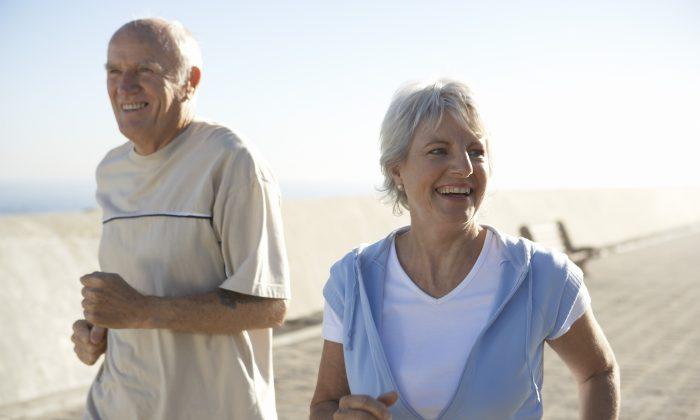Balance training is an important component of your fitness program at any age, but especially as you get older.
Balance is required for many of life’s tasks, such as getting up from a chair, climbing steps, running, participating in sports, and believe it or not—even walking.
If you take a closer look at walking, you will see that it’s simply a series of near falls—saved only by your ability to balance. When you walk, you have to balance on one leg for a brief moment as you raise and swing your other leg forward, then you stop yourself from tipping over as you set your lifted foot on the ground.
Although many of the tasks that require balance are simple, there is an epidemic of falls in older adults. According to the National Council on Aging (NCOA), every 15 seconds an older adult is treated in an emergency room for a fall.
One-third of Americans over the age of 65 will fall, and falls are the leading cause of death in older adults, with a senior dying every 29 minutes following a fall, according to the NCOA.
Why We Lose Balance
There are many reasons for the decline in overall balance.
The first is the obvious: We tend to adopt a sedentary lifestyle as we age. It goes back to the “use it or lose it” principle; the more you move and participate in activities that require balance, the more efficient your nervous system becomes at communicating with the rest of your body to help you maintain balance.
Confidence is another major player in terms of preventing a fall. When you’re not confident about your balance, you will tighten up your thigh muscles and take shorter strides, which results in shuffling your feet and striking the ground first with your toe instead of your heels. Walking like this is much more likely to lead to tripping, which can result in a fall.
There are several other factors that contribute to the decline in balance and mobility, such as medications, visual or inner ear issues, and the lack of ability to feel the ground.
Balance can also be affected if you’ve suffered a stroke, have multiple sclerosis or Parkinson’s disease, or any other neurological condition.
Orthopedic issues, whether it’s back, knee, hip, or ankle problems, can disrupt the communication between your nervous and muscular systems and will also throw you off balance.
How to Prevent Falls
While some of the above issues may not be preventable, most falls can be prevented by incorporating a few changes into your life.
One of those changes is to remove all clutter from your house, as most falls happen in the home.
The second is to slow down and focus on doing one thing at a time, instead of trying to multitask.
Probably the most important way to prevent falls is to get on a regular exercise program.
The best exercise programs for fall prevention use a multifaceted or integrated approach, which means they incorporate strength and flexibility exercises, gait and posture training, agility drills, and reaction and coordination work, along with various balance exercises.
Doing exercises that target these different areas is important for preventing falls because falls can happen as a result of bad posture, tight muscles, poor gait mechanics, or slow reaction time.
The take home message in preventing a fall can be summed up as: not rushing, focusing on what you’re doing, and beginning an exercise program that so you become more confident in your ability to move efficiently.]
Jason Greenspan is the Founder of Silver Stars Fitness, a fitness studio that caters to older adults. He has 20 years of experience working with seniors, is certified as a senior fitness specialist, has authored two fitness books, and appeared on NY1, as well as CBS with Dr. Max Gomez.
Silver Stars Fitness
850 7th Avenue, Suite 305
Phone: 646-573-9724
Email: [email protected]
Website: www.silverstarsfit.com


Friends Read Free